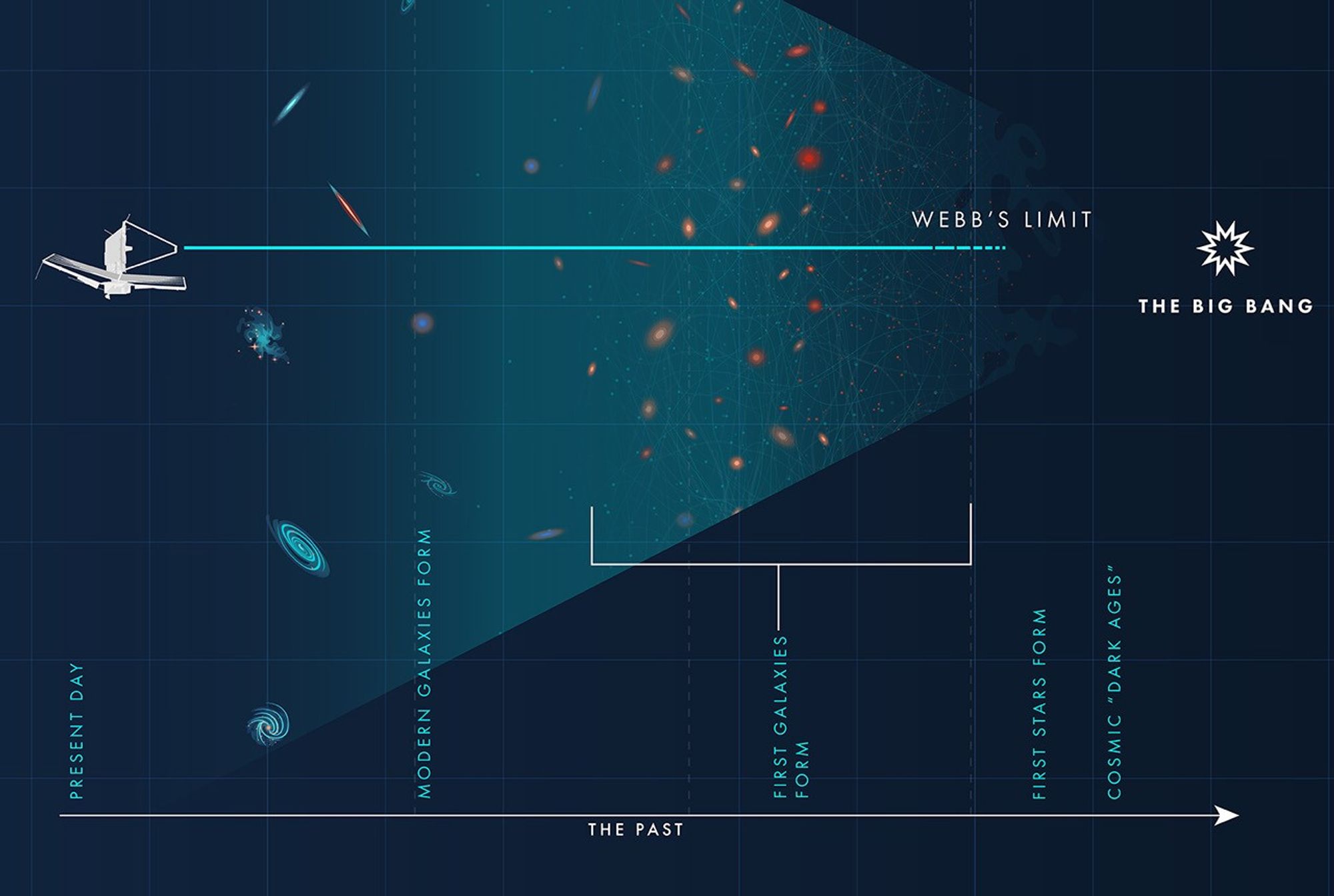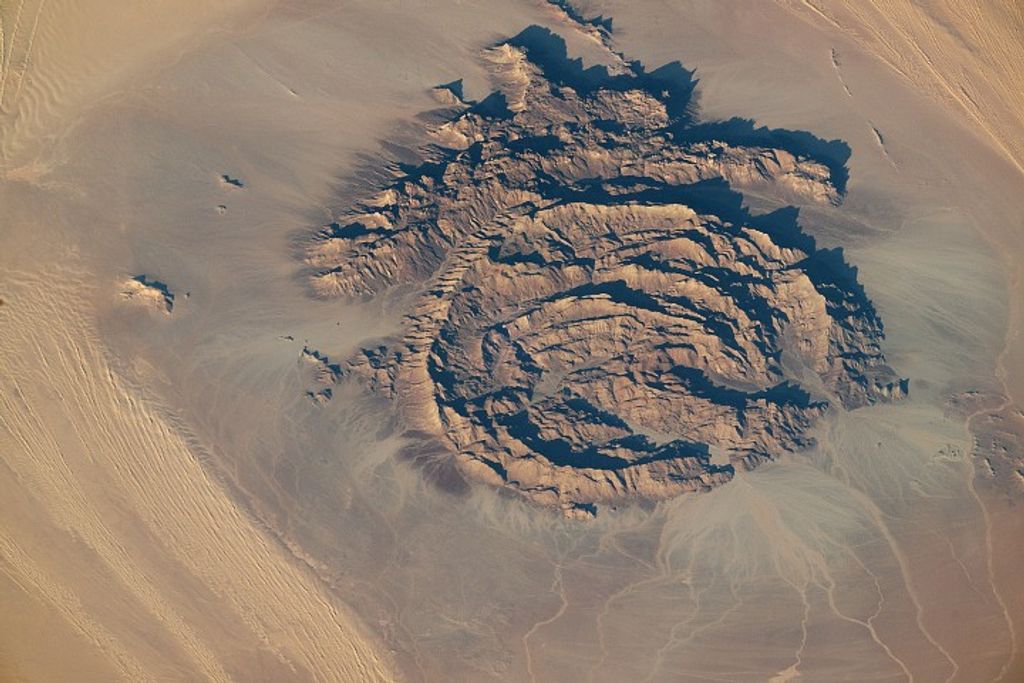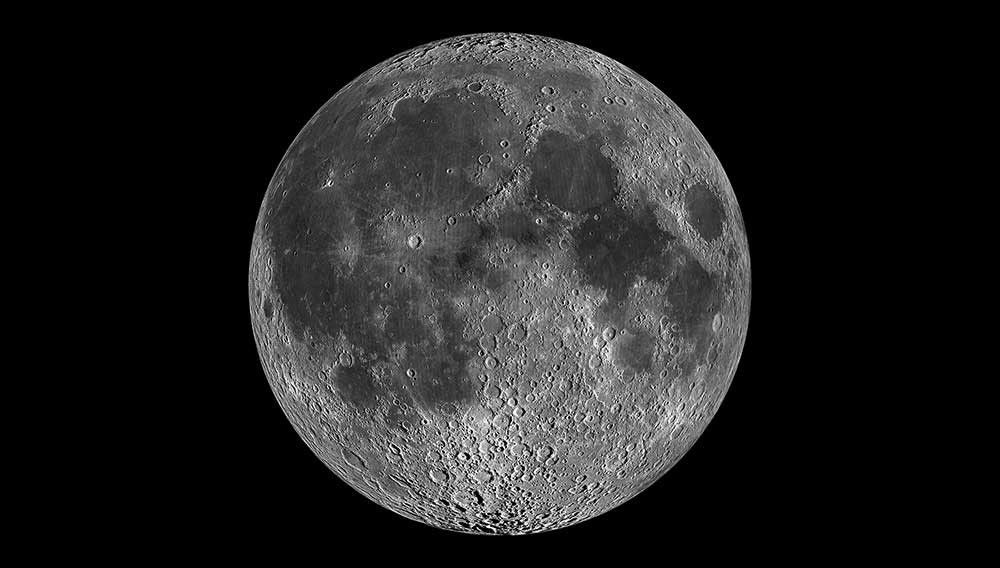How Does Webb See Back in Time?
Looking out in space is like looking back in time.
Telescopes can be time machines. Looking out in space is like looking back in time. It sounds magical, but it’s actually very simple: Light needs time to travel across the vast distances of space to reach us.
Light waves move extremely fast, about 186,000 miles (300,000 kilometers) per second, every second. Light moves so fast that as we go about our daily lives, it appears to travel instantaneously from one place to another. For example, it takes only a few billionths of a second for light to travel across a room once a lamp is switched on.
In space, however, the distances are so immense that the time light takes to travel is noticeable.
The Moon is Earth's closest companion, at about 239,000 miles (390,000 kilometers) away. Light takes around 1.3 seconds to travel the distance to Earth. When we look up at the sky, we see the Moon as it was 1.3 seconds earlier.
Similarly, light from the planet Neptune takes about four hours to cross the solar system, so we say Neptune is four light-hours away.
Traveling Light
JADES: GOODS South Fly-Through
Across our Milky Way galaxy, distances are measured in terms of how many years it takes light to travel. The nearest star is over four light-years away. When we look at that nearest star, we see it not as it is today, but as it was four years ago. We are seeing the light that left that star four years previously and is just reaching us now.
Galaxies are yet farther away in both space and time. Our nearest large neighbor galaxy, Andromeda, is about 2.5 million light-years away. The Virgo Cluster of galaxies is the largest nearby collection of galaxies, at about 60 million light-years from the Milky Way. The light we see today from galaxies in the Virgo Cluster started on its path toward us at the same time as the age of the dinosaurs was ending on Earth. If you were in a Virgo Cluster galaxy today, and you had a telescope powerful enough to study the Earth, you would be able to see the prehistoric reptiles.
Very distant galaxies are billions of light-years away. At that distance, their light tells what the universe was like billions of years ago. Since the age of the universe is about 13.8 billion years, these distant observations allow astronomers to measure changes over the lifetime of the universe.



























